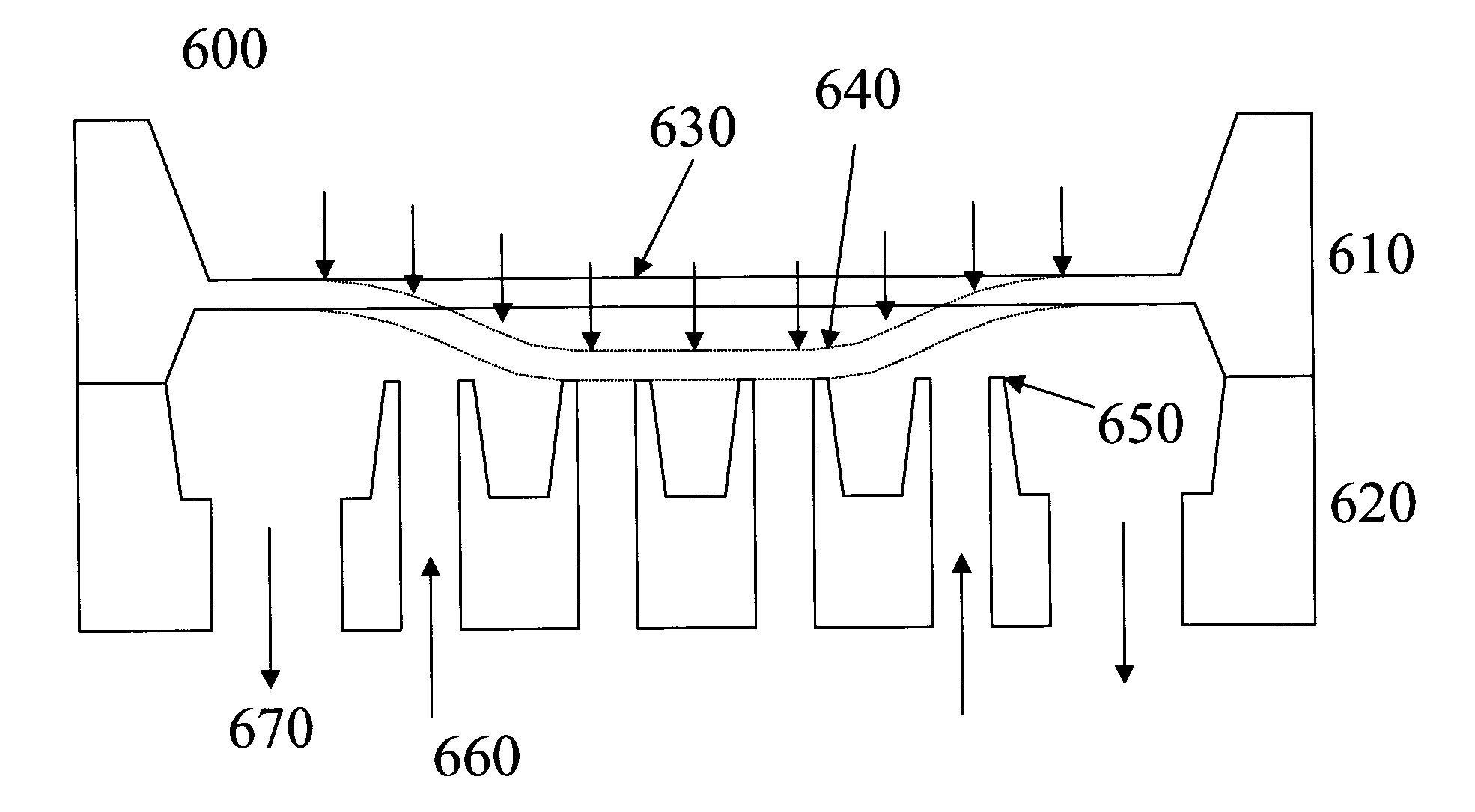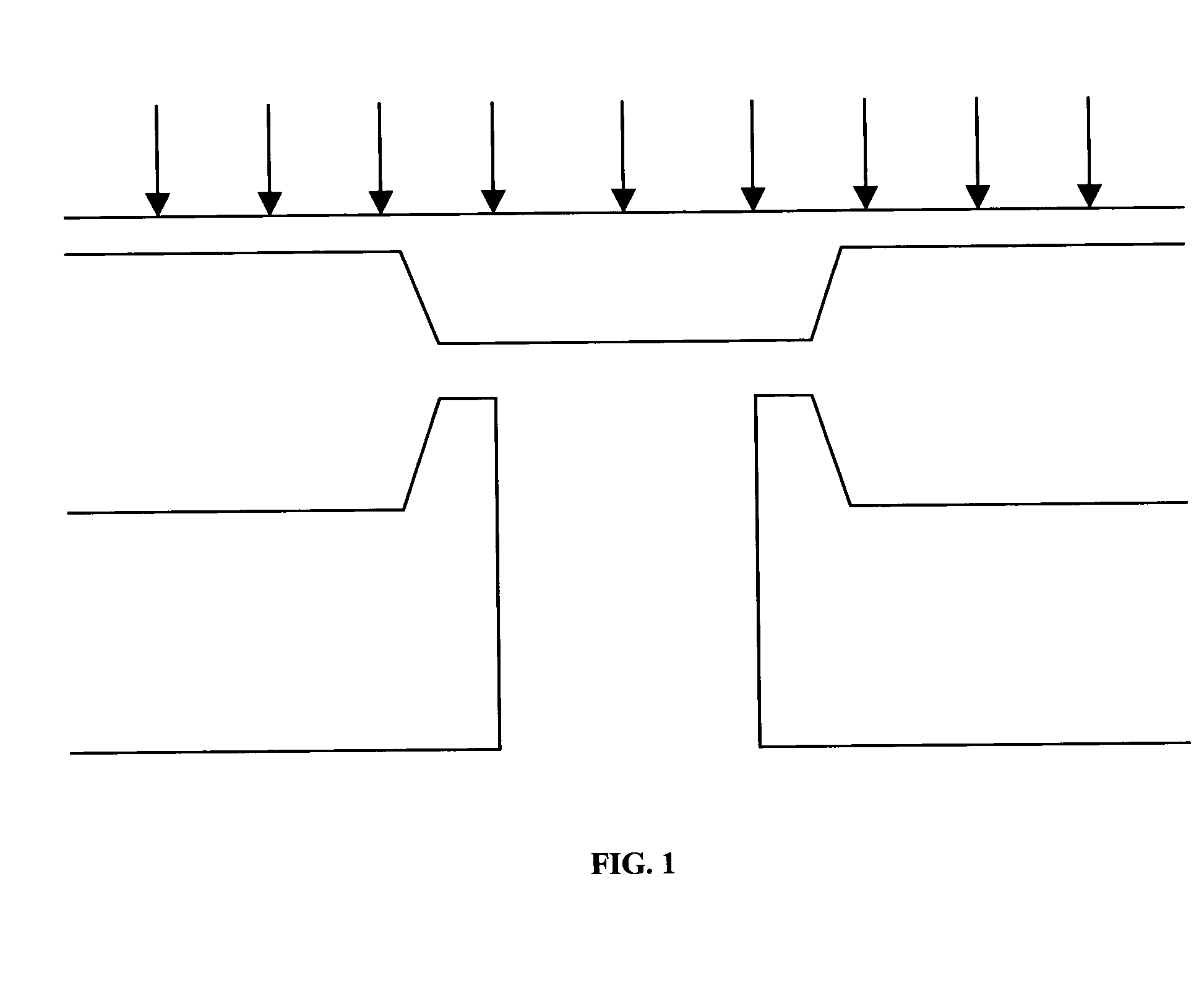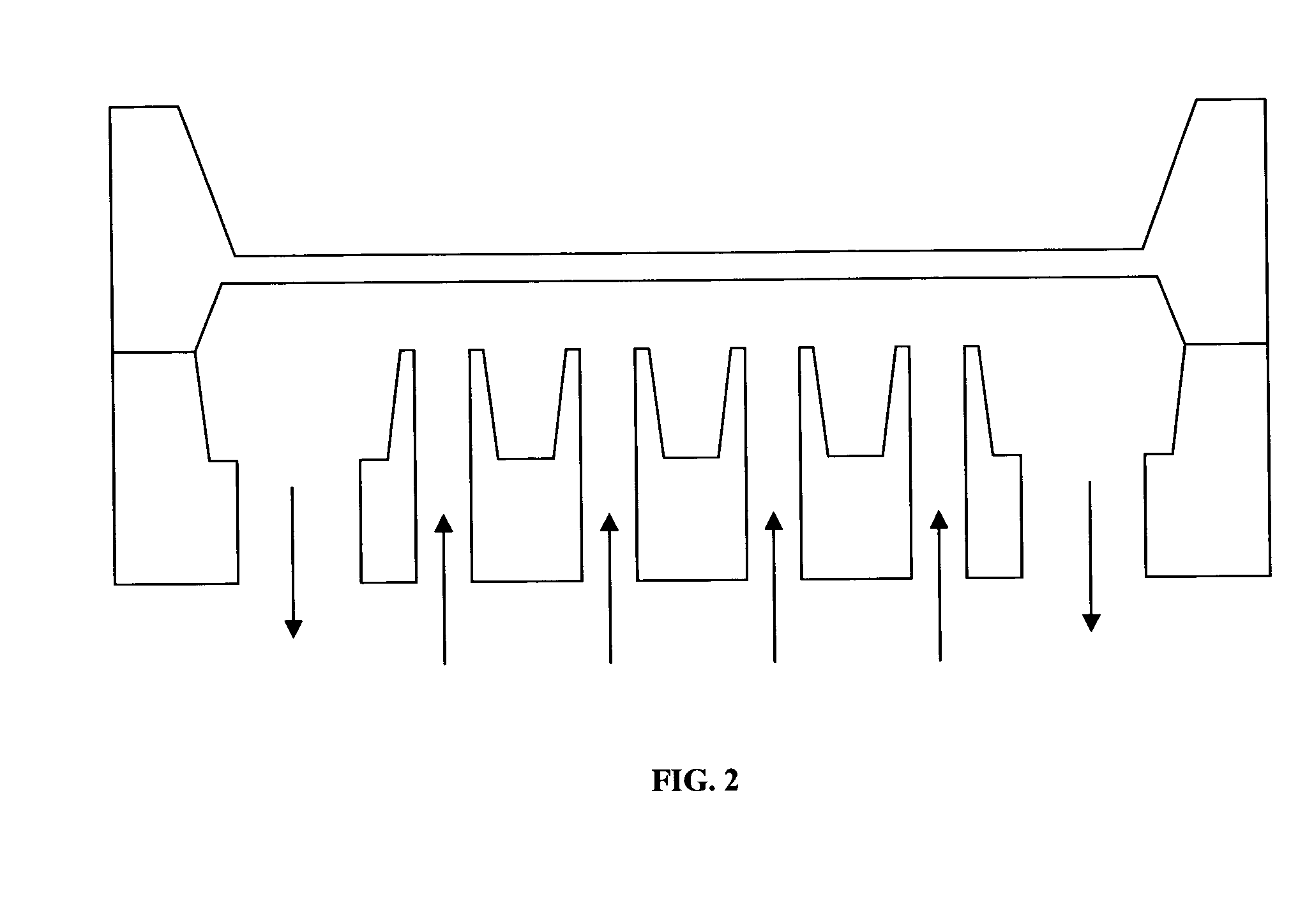High-flow microvalve
a micro-valves, high-flow technology, applied in the direction of diaphragm valves, engine diaphragms, machines/engines, etc., can solve the problems of large dynamic range and high flow resolution of high-flow mfcs, unsatisfactory large resolution of diaphragm position relative to the valve seat array, and inability to optimize the flow through the micro-valves, etc., to achieve the effect of limiting the performance of the micro-
- Summary
- Abstract
- Description
- Claims
- Application Information
AI Technical Summary
Benefits of technology
Problems solved by technology
Method used
Image
Examples
Embodiment Construction
[0028]This invention discloses a method of designing valves which achieve high flow by maximizing the ratio of valve seat periphery length to a linear parameter equal to the square root of the area enclosed by the valve seat periphery. A preferred structure for a given valve seat area is also disclosed. This flow maximization also minimizes the gap between the actuator and the valve seat, corresponding to a desired maximum flow. As such, these valve designs presume valve operation in the gap height controlled regime, where the gap is less than one-half the radius of the combined valve seat opening. However, as the valve flow model indicates, this classical situation does not always hold. Orifice-controlled flow must also be considered. The transition from gap-controlled to orifice-controlled flow is a function of the actual design parameters of the valve, making the full flow model, given below, essential.
[0029]By maximizing the flow for a given constraint on the valve seat area, th...
PUM
 Login to View More
Login to View More Abstract
Description
Claims
Application Information
 Login to View More
Login to View More - R&D
- Intellectual Property
- Life Sciences
- Materials
- Tech Scout
- Unparalleled Data Quality
- Higher Quality Content
- 60% Fewer Hallucinations
Browse by: Latest US Patents, China's latest patents, Technical Efficacy Thesaurus, Application Domain, Technology Topic, Popular Technical Reports.
© 2025 PatSnap. All rights reserved.Legal|Privacy policy|Modern Slavery Act Transparency Statement|Sitemap|About US| Contact US: help@patsnap.com



